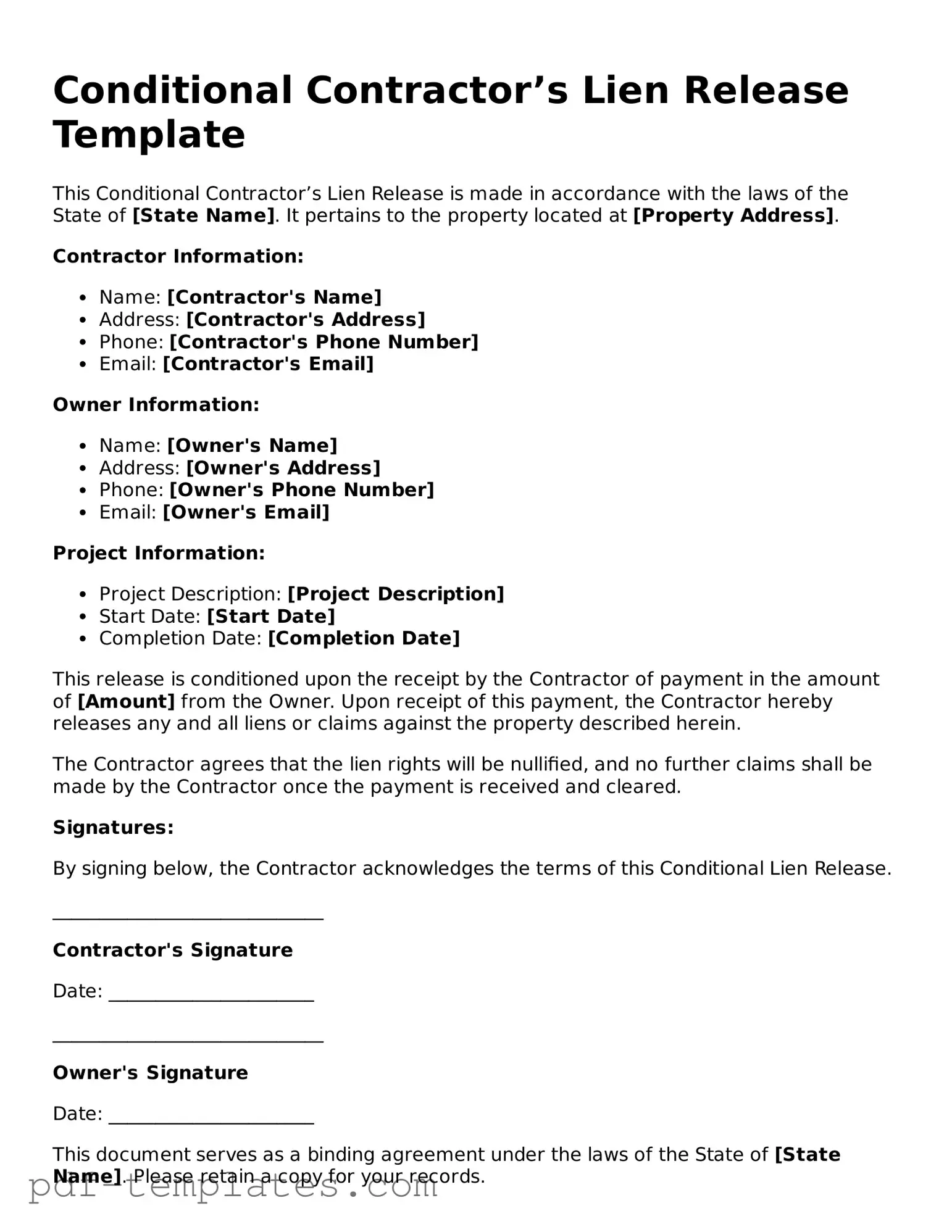The Conditional Waiver and Release of Lien is a document that serves a similar purpose to the Conditional Contractor’s Lien Release form. Both documents are designed to protect the rights of contractors and subcontractors while also providing assurance to property owners. The Conditional Waiver and Release of Lien allows a contractor to waive their right to file a lien on a property, contingent upon receiving payment. This means that the contractor can still pursue their rights if payment is not made, offering a layer of security for both parties involved in the transaction.
The Unconditional Waiver and Release of Lien is another document that parallels the Conditional Contractor’s Lien Release form. Unlike the conditional version, the unconditional waiver signifies that a contractor has received payment and is relinquishing their right to file a lien on the property. This document provides finality and peace of mind to property owners, as it confirms that the contractor has been compensated and will not pursue any claims against the property in the future. It is essential for both parties to understand the implications of this waiver, as it effectively closes the door on any potential lien claims.
In the realm of liability and risk management, it is essential to understand the various forms that help protect against potential claims. One such important document is the Release of Liability form, which serves to waive rights to sue for injuries sustained during activities, providing a crucial layer of protection for organizers. This form is particularly useful in high-risk situations, ensuring that individuals acknowledge the inherent dangers involved and agree not to pursue legal action. By incorporating such forms into your event planning, you can help create a safer environment for all participants.
The Notice of Intent to Lien is also closely related to the Conditional Contractor’s Lien Release form. This document is typically sent before a lien is filed, notifying the property owner of the contractor’s intent to file a lien if payment is not received. While the Conditional Contractor’s Lien Release form provides a way to secure payment while maintaining lien rights, the Notice of Intent serves as a warning and a call to action. It encourages property owners to address any outstanding payments before the contractor takes further legal steps, thereby fostering communication and resolution.
Lastly, the Mechanic’s Lien itself is a document that shares similarities with the Conditional Contractor’s Lien Release form. A Mechanic’s Lien is a legal claim against a property for unpaid work or materials supplied. While the Conditional Contractor’s Lien Release form is used to temporarily relinquish lien rights upon the condition of payment, the Mechanic’s Lien represents the enforcement of those rights when payment is not received. Understanding the relationship between these documents is crucial for both contractors and property owners, as they navigate the complexities of payment and lien rights in construction projects.
